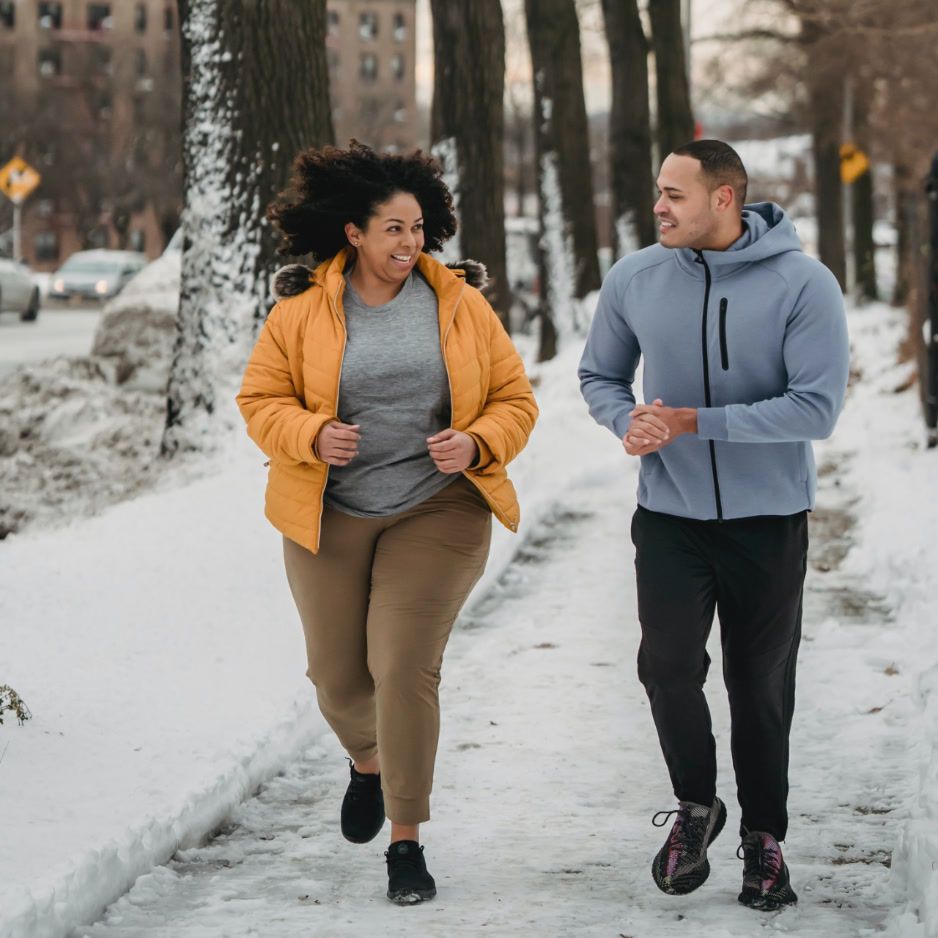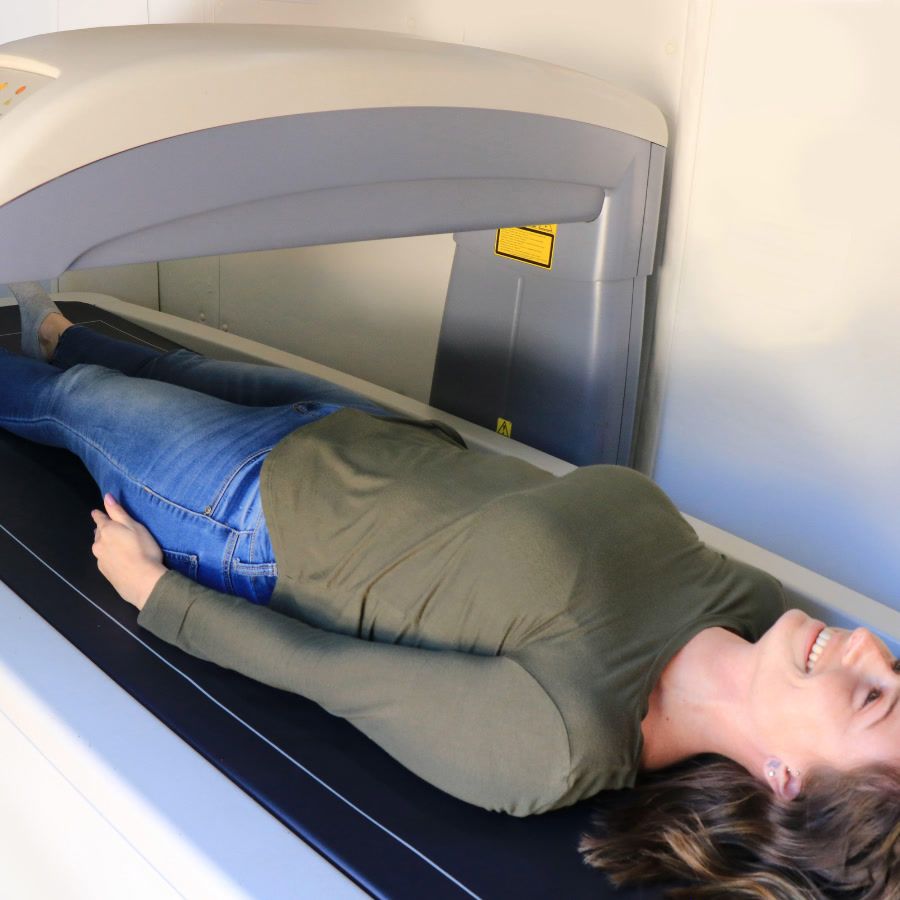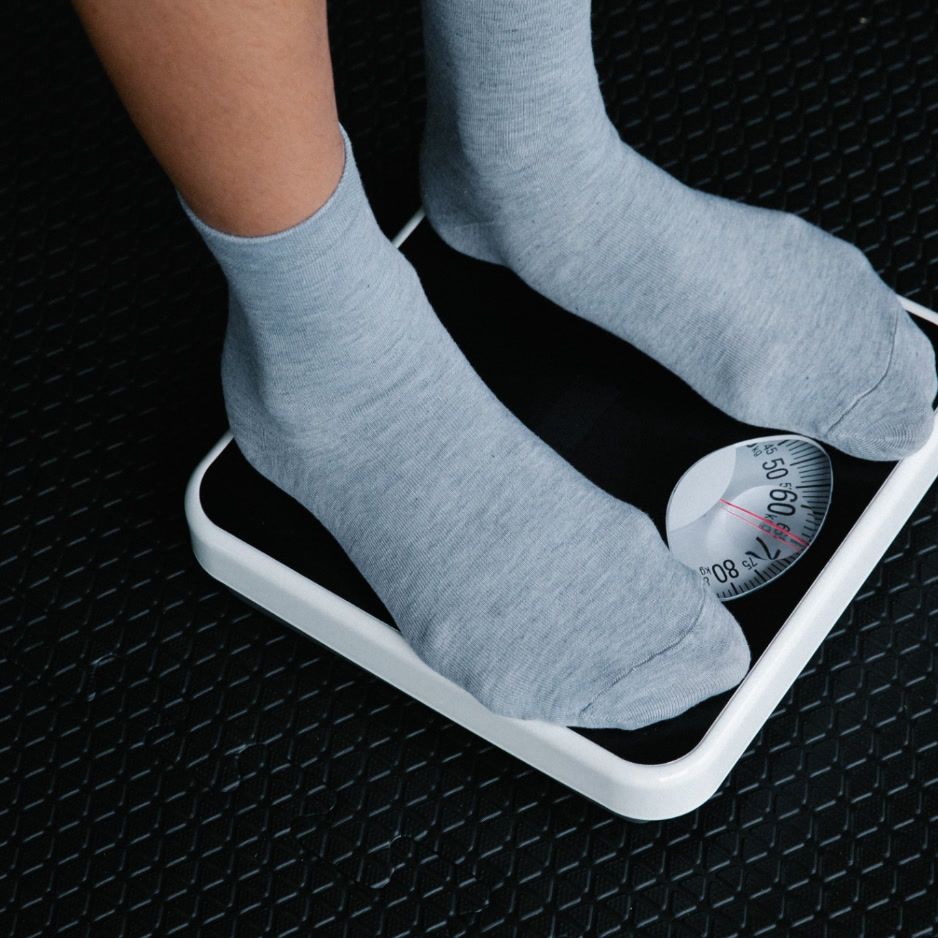Water Aerobics: Joint-Friendly Full-Body Workout
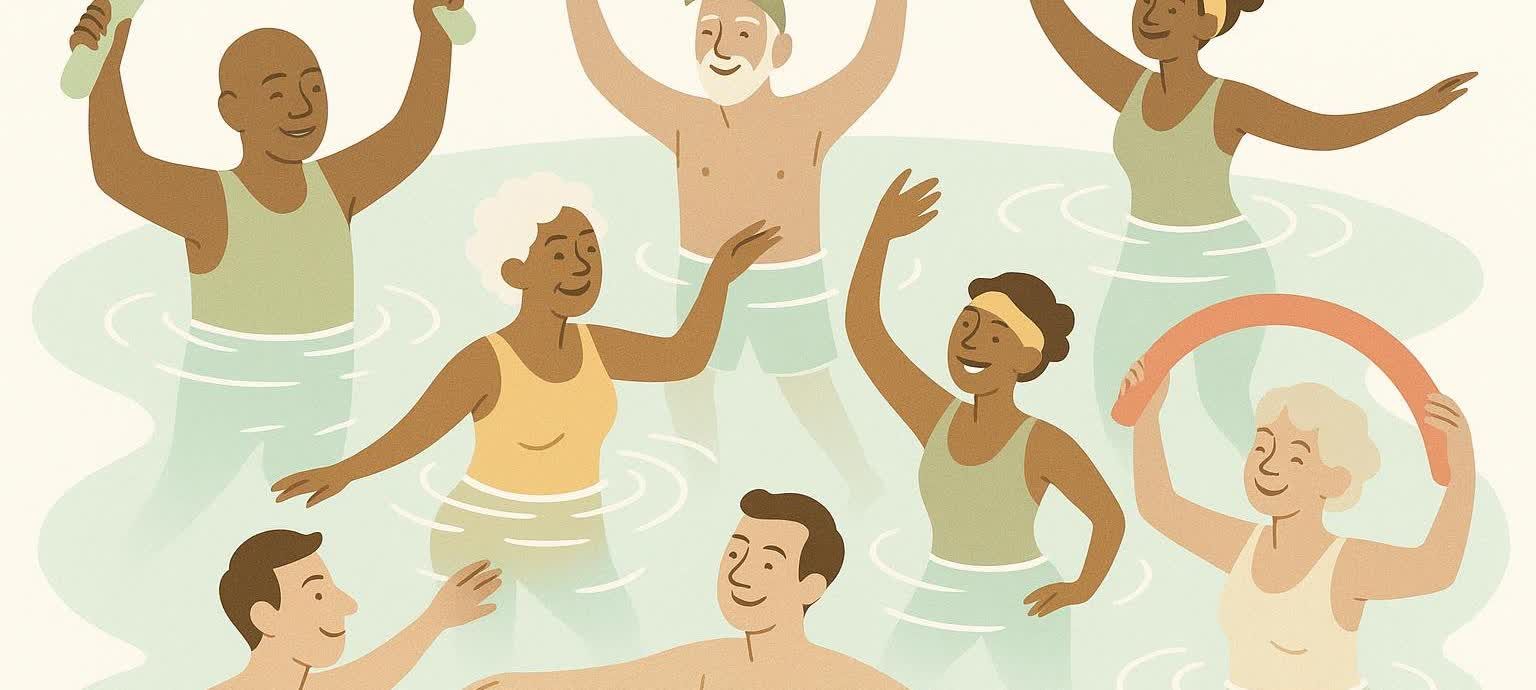
Water Aerobics: Joint-Friendly Full-Body Workout
Water aerobics is a low-impact fitness class performed in waist- to chest-deep water. The pool’s buoyancy can reduce the weight-bearing load on your joints by up to 90 percent (ACE FitFacts PDF), while its natural drag strengthens muscles and boosts heart health. This combination of buoyancy and resistance makes water aerobics an ideal workout for seniors, rehab clients, and cross-training athletes.
Table of Contents
- Why Train in Water? The Unique Science Explained
- 10 Proven Benefits of Water Aerobics
- Beginner-Friendly 30-Minute Pool Routine (No Equipment)
- Progressions for Athletes & Cross-Trainers
- Safety Tips, Gear, and Pool Etiquette
- Calories Burned & How to Track Progress
- FAQ
1. Why Train in Water? The Unique Science Explained
The Role of Buoyancy in Reducing Joint Load
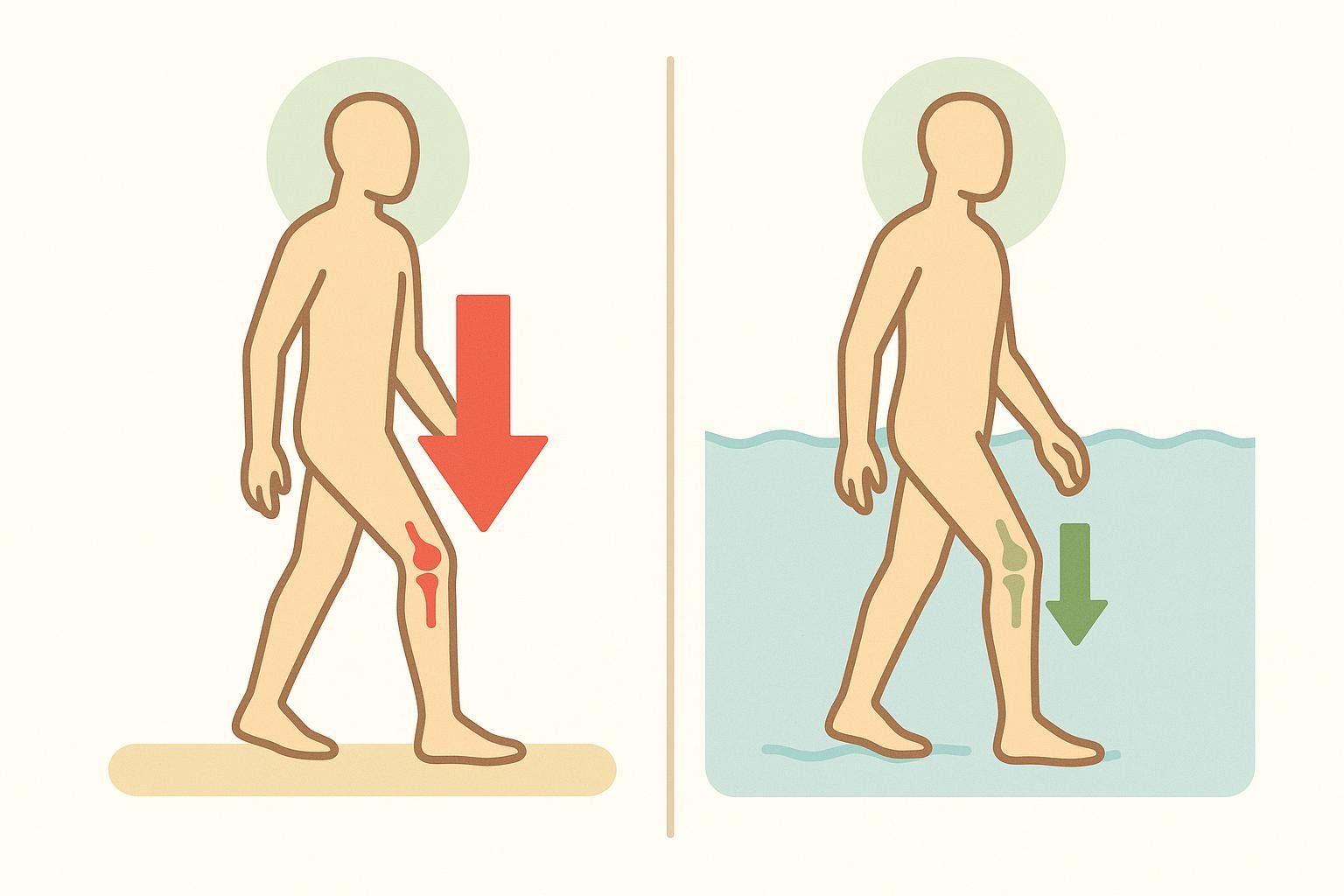
Standing in chest-deep water slashes the stress on your knees and hips to just a fraction of what you feel on dry land. That freedom of movement is a game-changer for painful or recovering joints.
Water Viscosity Provides Multi-Directional Resistance
Water is roughly 800 times denser than air, so every direction you move becomes strength work (Everyday Health). Slow the motion for muscle endurance; speed it up for power.
Hydrostatic Pressure Supports Cardiovascular Efficiency
The surrounding water gently compresses the body, helping the heart return blood to the chest. Your heart rate may read 10–13 beats lower than the same effort on land, yet cardiovascular demand is similar (Healthline). Learn how to interpret these readings with our VO₂ max and heart-rate guide.
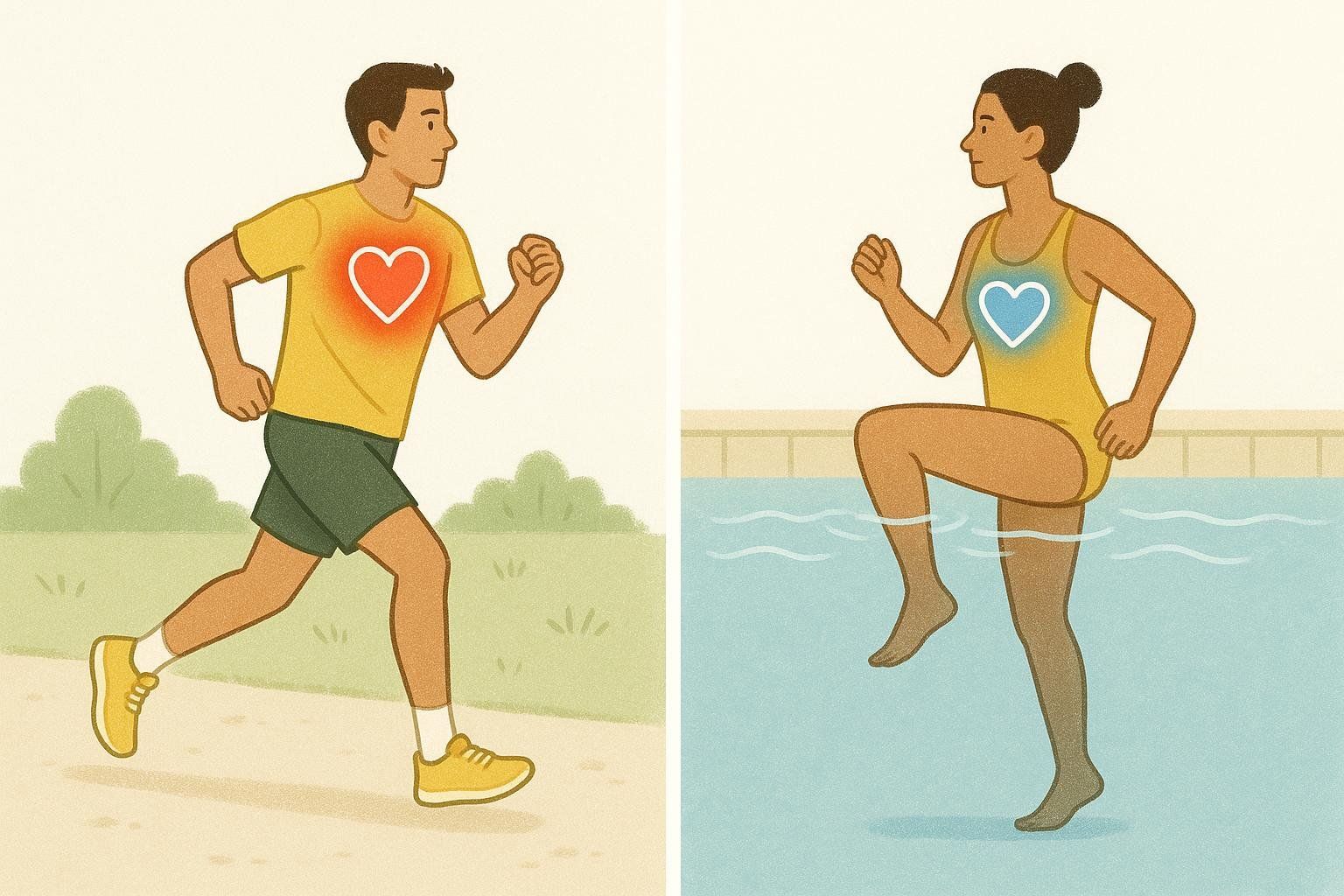
Thermal Conductivity Increases Caloric Expenditure
Water conducts heat away from the body about 25 times faster than air, so immersion—even in temperate pools—makes your metabolism work harder to maintain core temperature (NIH Office of Research Services).
Want more low-impact training ideas? See our complete guide to joint-friendly cardio.
2. 10 Proven Benefits of Water Aerobics
| # | Benefit | Why It Matters |
|---|---|---|
| 1 | Reduced Joint Pain | Buoyancy unloads cartilage, easing arthritis discomfort (Everyday Health). |
| 2 | Full-Body Strength | Water resistance engages opposing muscle groups simultaneously. |
| 3 | Built-In Core Training | Staying upright against turbulence forces constant core activation. |
| 4 | Cardiovascular Fitness | Comparable VO₂ improvements to land aerobics with less impact. |
| 5 | Flexibility & Mobility | Warm water plus reduced gravity allows greater joint range. |
| 6 | Improved Balance | Perturbations train stabilizers in a fall-safe environment. |
| 7 | Calorie Expenditure | Moderate class burns ~220–400 calories in 30 minutes for a 160-lb adult (ACE). |
| 8 | Mental Health Lift | Aquatic exercise can lower anxiety and improve mood, according to a 2022 systematic review of 18 studies (PMC). |
| 9 | Social Connection | Group classes foster accountability—strong predictor of long-term adherence. |
| 10 | Year-Round Accessibility | Heated indoor pools bypass weather and seasonal barriers. |
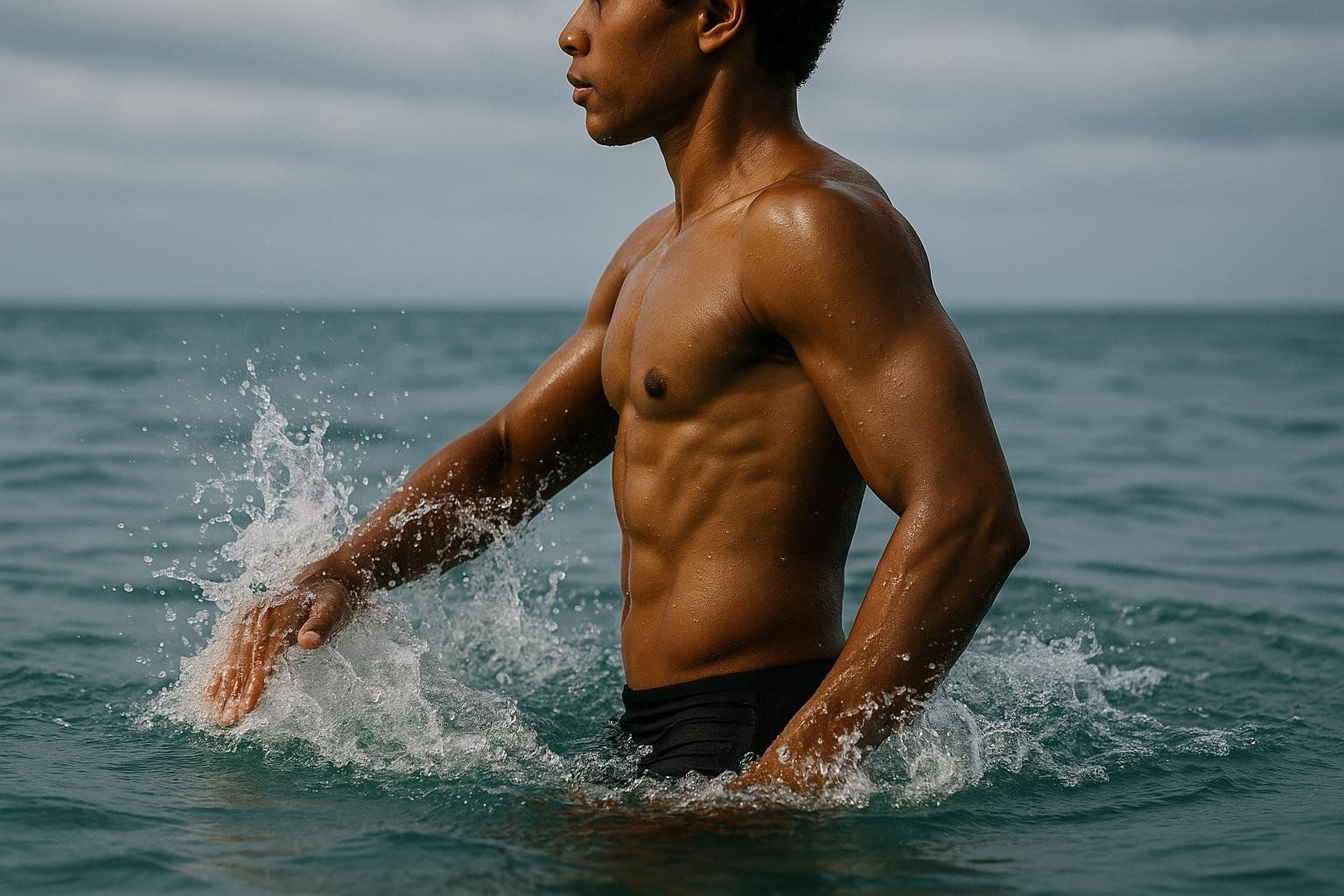
Chronic knee pain holding you back? Pair pool workouts with these joint relief strategies.
3. Beginner-Friendly 30-Minute Pool Routine
Equipment: none required (optional water shoes or noodle)
Depth: waist to chestWarm-Up (5 min)
- Water walk forward & back – 2 min
- Arm circles underwater – 1 min
- Gentle knee lifts – 2 min
Main Set (20 min)
Perform each of the following four exercises for 45 seconds, resting 15 seconds between moves. Complete 5 full rounds of this circuit.
Move How to Do It Aqua Jacks Step legs out & in while sweeping arms underwater Pool Push-Offs Face pool wall, squat, push off with feet, glide backward until your body naturally returns upright, walk to the wall, repeat High-Knee Jog Drive knees upward, pump arms Tuck Crunch Stand (hold pool edge if needed), draw both knees toward chest, lower feet with control Cool-Down (5 min)
Slow water walk for 2 minutes, then hold calf, quad, and shoulder stretches for about 30 seconds each (total stretch time ≈ 3 minutes).
Coaching Cues
- Breathe continuously—avoid holding your breath, as water pressure can raise blood pressure.
- Maintain upright posture—avoid excessive forward lean.
- The harder you push against the water, the tougher the set.
4. Progressions for Athletes & Cross-Trainers
| Goal | Try This | Why It Works |
|---|---|---|
| Power | Aqua tuck jumps in deep water using a belt | Maximizes hip power without landing impact. |
| Endurance | 45-min deep-water running intervals (1 min hard / 1 min easy × 20) | Keeps HR elevated while legs recover from mileage. |
| Strength | Drag hand paddles or foam dumbbells through water circuits | Greater surface area = more resistance. |
| Mobility | Dynamic leg swings using pool wall for support | Improves hip ROM without gravitational torque. |
5. Safety Tips, Gear, and Pool Etiquette
Get Cleared First
If you have cardiac conditions, uncontrolled blood pressure, or recent surgery, obtain medical clearance—water can mask overexertion signals.
Essential Gear
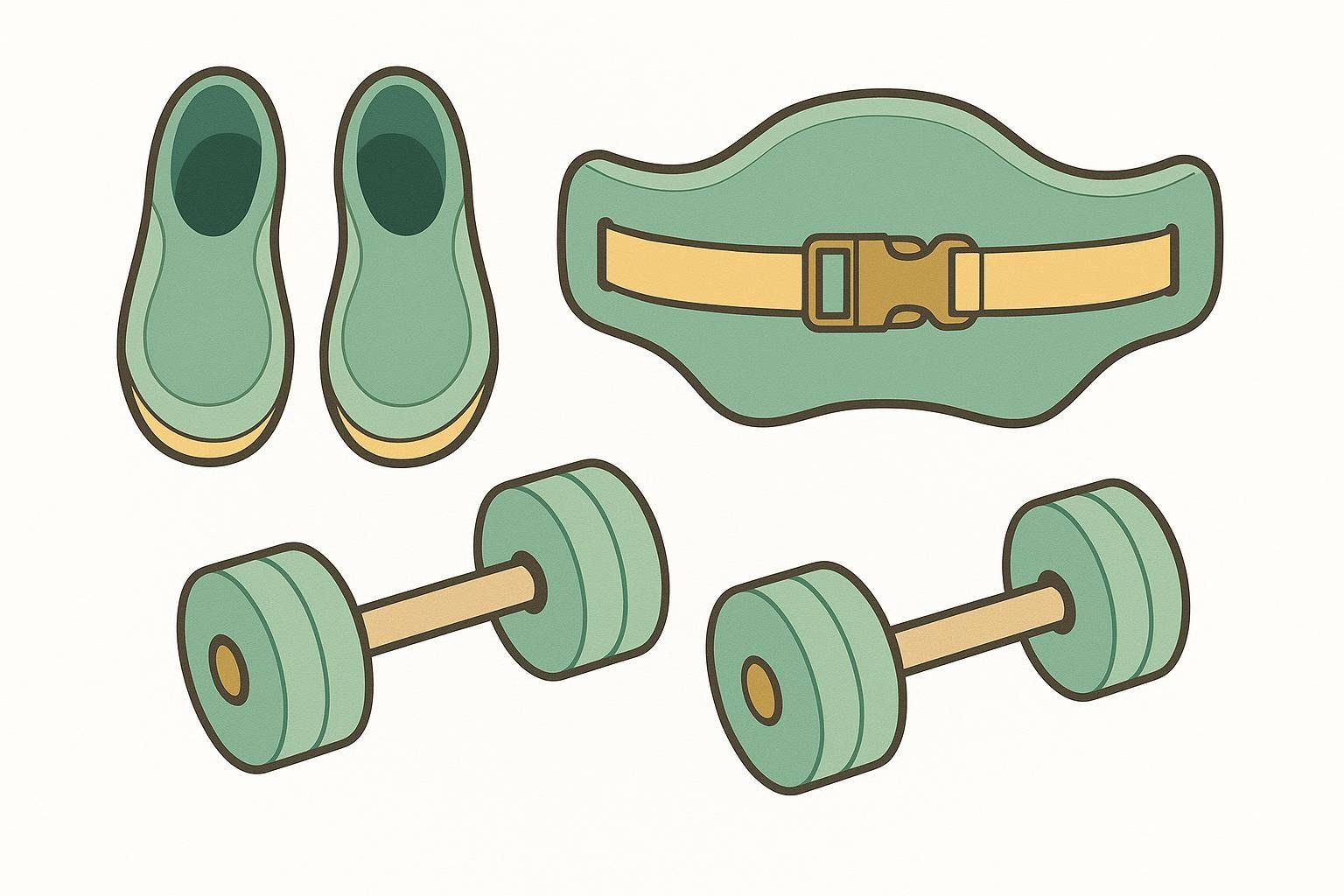
- Water shoes – grip + arch support
- Aqua belt – keeps torso vertical for deep-water moves
- Foam dumbbells / paddles – scalable resistance
- Anti-fog goggles if you submerge often
Pool Etiquette 101
- Be mindful of your personal space within the group. If the class shares a pool with other swimmers, stay within the designated class area.
- Shower before entering to keep water clean.
- Return equipment neatly after use.
- Hydrate poolside—yes, you still sweat!
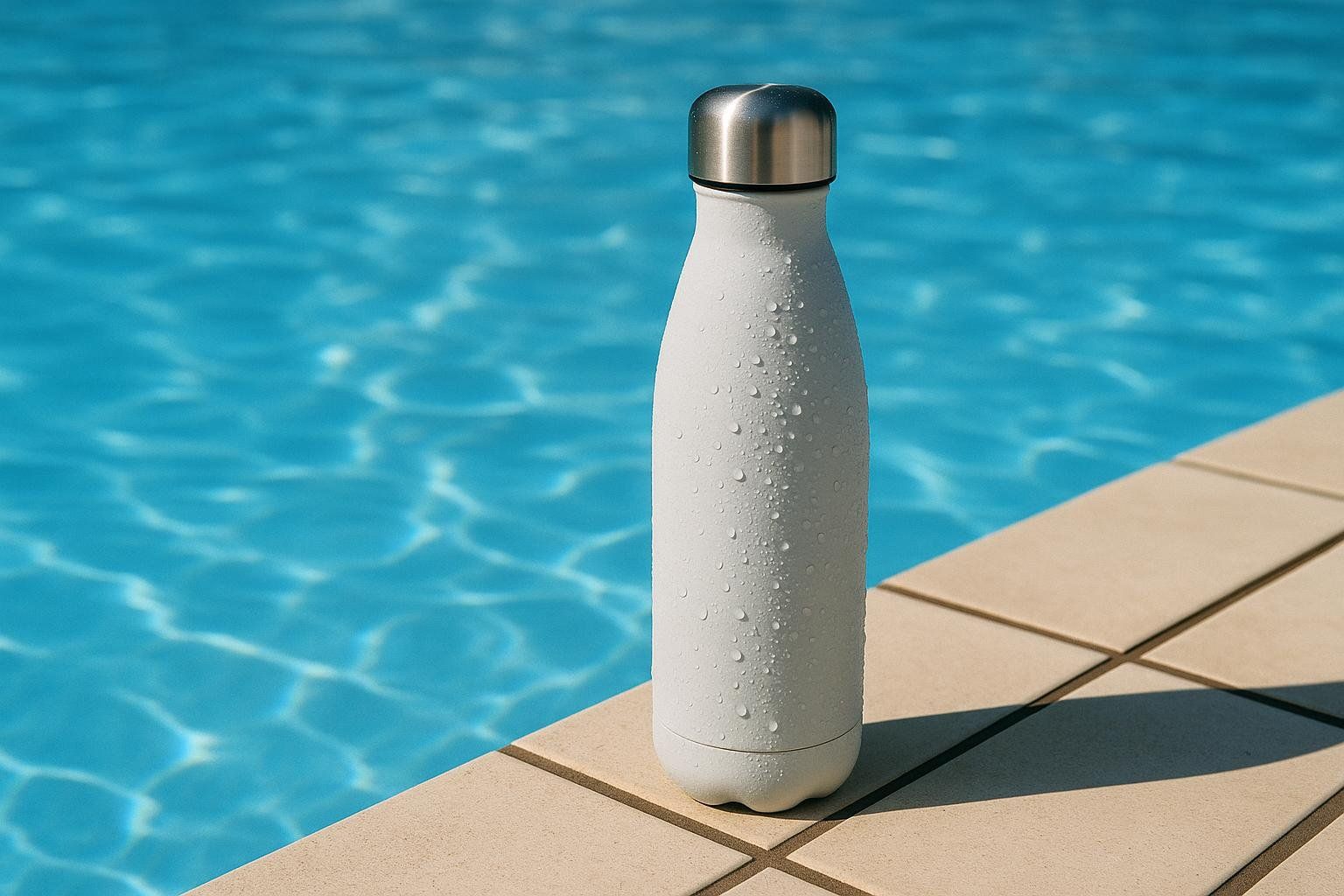
Chlorine & Skin Care
Using a vitamin C rinse can help neutralize residual chlorine for frequent swimmers. Dermatologists also recommend showering promptly with a mild, fragrance-free cleanser after swimming and reapplying moisturizer to replace natural skin oils.
6. Calories Burned & Tracking Progress
Quick Calorie Math
A 160-lb (73 kg) person burns roughly 6–8 calories per minute during moderate water aerobics, and 9–11 cal/min at vigorous intensity (ACE).
| Duration | Moderate | Vigorous |
|---|---|---|
| 30 min | 180 cal | 300 cal |
| 45 min | 270 cal | 450 cal |
Beyond the Calorie Counter
- RPE Scale: Aim for 5–7 (breathing heavy, can speak a sentence).
- Heart-Rate Strap: Readings run lower in water; combine with perceived effort.
- DEXA Scan: Quantify fat loss and lean-mass trends every 90 days—our body composition scan guide. Ready to dive deeper? Book your scan and re-test in 12 weeks to precisely track your progress.
7. FAQ
Is water aerobics good for weight loss?
Yes—consistent classes combined with nutrition support can create the caloric deficit needed for fat loss. The bonus: you can train more frequently because recovery is faster.
Do I need to know how to swim?
Most classes occur in shallow water where your feet touch the floor. Deep-water formats require comfort wearing a flotation belt and the confidence to stay upright without touching; non-swimmers should stick to shallow-water sessions or take basic swim lessons first.
Will it really build muscle?
Expect modest hypertrophy, similar to high-rep band work. For maximal lean-mass gains, add 2–3 land-based strength sessions per week.
What should I wear?
A snug-fit suit (one-piece or jammer), optional rash-guard, and water shoes. Cotton T-shirts soak up water and limit movement.
How warm should the pool be?
For most aqua-fitness classes, an 83–86 °F (28–30 °C) pool is comfortable and safe for exercise (U.S. Masters Swimming recommends 78–86 °F for fitness swimming).
